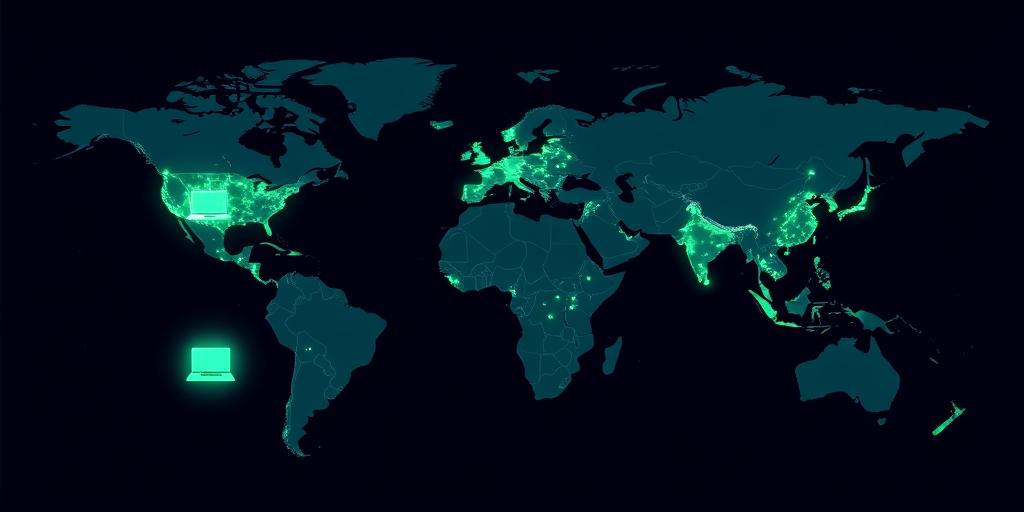The Future of Tech Regulation Global Perspectives
Explore the future of tech regulation from a global perspective. Learn about the approaches of the EU, the US, and China, as well as emerging trends and challenges in AI regulation and cross-border data flows.

The Future of Tech Regulation Global Perspectives
The Future of Tech Regulation: A Global Perspective
The tech landscape is rapidly evolving, and with it comes the urgent need for effective and adaptive regulation. From data privacy to antitrust concerns and the ethical implications of AI, governments worldwide are grappling with how to steer technological advancements in a way that benefits society while mitigating potential risks.
The European Approach: GDPR and Beyond
The European Union has been at the forefront of tech regulation with the General Data Protection Regulation (GDPR). This comprehensive law, enacted in 2018, set a new global standard for data privacy. GDPR grants individuals greater control over their personal data, requiring companies to obtain explicit consent for data collection and processing. The EU's approach emphasizes a human-centric view, prioritizing individual rights and data protection.
Beyond GDPR, the EU is also pioneering new regulations aimed at curbing the power of tech giants. The Digital Services Act (DSA) and the Digital Markets Act (DMA) seek to create a fairer and more competitive digital market. These regulations target anti-competitive practices, ensuring that dominant platforms do not abuse their market power.
The United States: A Fragmented Landscape
In contrast to the EU's unified approach, the United States faces a more fragmented regulatory landscape. Federal laws like the California Consumer Privacy Act (CCPA) and the Children's Online Privacy Protection Act (COPPA) address specific aspects of data privacy, but there is no comprehensive federal privacy law akin to GDPR.
Antitrust enforcement is another key area of focus in the U.S. The Department of Justice and the Federal Trade Commission have been actively investigating and litigating against tech giants, challenging mergers and acquisitions that could stifle competition. The debate over Section 230 of the Communications Decency Act, which shields online platforms from liability for user-generated content, also remains a contentious issue.
China: A State-Driven Approach
China's approach to tech regulation is characterized by strong state control and a focus on national security. The Cybersecurity Law of 2017 and subsequent regulations impose strict requirements on data localization, cross-border data transfers, and the security of critical information infrastructure.
China's regulatory framework also reflects its ambitions to be a global leader in emerging technologies like AI and blockchain. The government has issued guidelines and standards to promote responsible innovation while ensuring that these technologies align with its strategic goals.
Emerging Trends and Challenges
Several emerging trends are shaping the future of tech regulation globally:
- AI Regulation: As AI becomes more pervasive, policymakers are grappling with how to regulate its use in areas like facial recognition, autonomous vehicles, and healthcare. The EU is developing a comprehensive AI Act that would classify AI systems based on risk, imposing stricter requirements on high-risk applications.
- Cross-Border Data Flows: The ability to transfer data across borders is essential for the global digital economy, but it also raises concerns about data privacy and security. Striking a balance between enabling data flows and protecting personal information is a key challenge for regulators.
- Platform Accountability: The role of online platforms in moderating content and combating disinformation is under increasing scrutiny. Regulations like the DSA in the EU aim to hold platforms accountable for the content they host and to ensure that they take steps to protect users from harmful content.
Conclusion
The future of tech regulation will require international cooperation and a multi-stakeholder approach. Governments, industry, civil society, and academia must work together to develop regulatory frameworks that are both effective and adaptable. As technology continues to evolve, regulations must keep pace to ensure that innovation benefits society as a whole.






